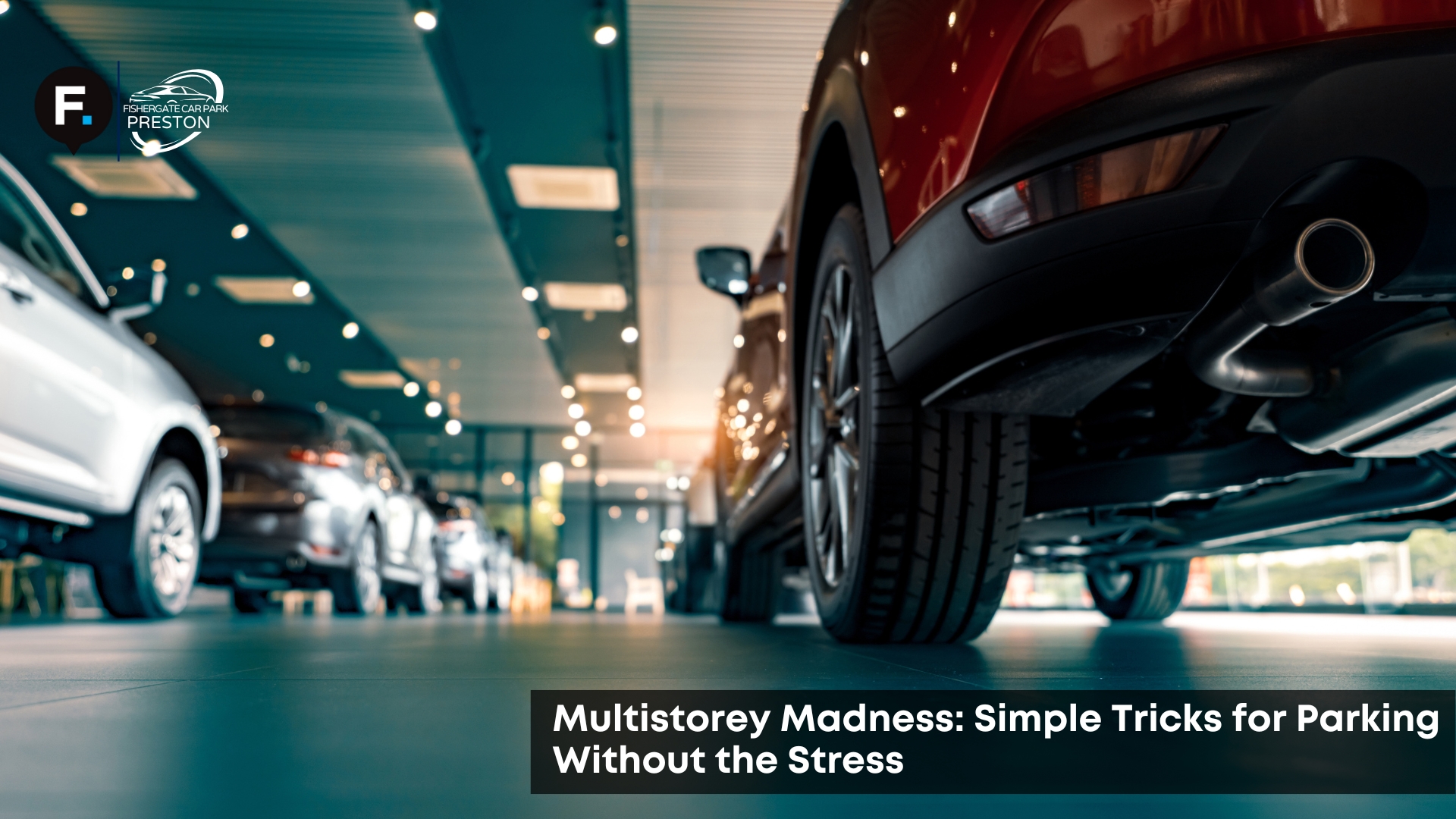Multistorey Madness: Simple Tricks for Parking Without the Stress
Have you ever circled a multistorey car park again and again, only to end up on the roof? At Fishergate Car Park Preston, we know the frustration all too well. With so many levels, ramps, signs and vehicles, even the most confident driver can feel confused. But a few simple tricks can turn multistorey car parking from madness into something much smoother. One of them starts with knowing why these car parks feel so chaotic in the first place.
Why Do Multistorey Car Parks Feel So Overwhelming?
Multistorey car parks often feel overwhelming due to their narrow lanes, tight turns, confusing signs, and limited visibility. Drivers may struggle with sharp bends, unclear exits or remembering which floor they parked on. These issues are common in many multistorey car parks, especially older designs. Even the best multi-car park can feel like a maze if you’re not prepared. But some floors offer a little more space and peace.
Which Floors Usually Have the Most Empty Spaces?
The upper floors of a multistorey car park usually have the most empty spaces. Most drivers park on the lower levels to save time, leaving the top levels less crowded. This can be useful during busy hours, especially if the multistory car park has a lift. Parking on higher floors may also mean fewer tight squeezes or stressful manoeuvres. You should consider your exit strategy in advance.
Should You Park Closer to the Entrance or Exit?
Yes, it can be helpful to park closer to the exit if you want to save time when leaving. However, these spots are often full or more expensive in pay-on-foot multistorey car parks. If you’re in no rush, parking near the entrance may be easier and give you better lighting or security. Some multistorey car parking layouts mark these zones for easy choice. To avoid confusion altogether, navigation matters next.
How Can You Avoid Getting Lost Inside a Multistorey Car Park?
You can avoid getting lost by noting down your floor number, colour zone or using parking apps that tag your location. Many multistorey car parks use visual cues, such as painted walls or signage, to help you remember your space. You could also take a quick photo of the nearest lift sign or bay marker. This is especially helpful in large or award-winning car parks that span several levels. Now, timing comes into play.
What Are the Best Times to Use a Multistorey Without the Crowds?
The best times to use a multistorey car park without crowds are weekday mid-mornings and early afternoons. Avoid rush hours, lunch breaks, and weekends when shopping or attending events in the area. Off-peak access helps you avoid queues at entry barriers and makes finding a bay faster. Many car park awards are given to facilities that manage traffic effectively throughout the day. But if you want guidance, there’s an app for that.
Can Parking Apps Help You Navigate Multistorey Layouts?
Yes, many car parking apps help you find, book and even navigate multistorey layouts. Apps like the car park finder app or mobile car parking apps utilise GPS and level data to guide you to available parking spaces. Some apps also offer payment options to avoid waiting in line at machines. Fishergate Car Park Preston supports several car park payment apps for this reason. Once you’re parked, remembering your space is key.
Is There a Way to Remember Where You Left Your Car?
Yes, the simplest way to remember your space is to use a car parking app that records your location or to note your bay number. Multistorey car parks often label spaces clearly, like parking space three or level B blue zone. Make a quick note in your phone or snap a photo. This small habit can save you time and stress at the end of your day. And if you’re parking in Preston, it’s worth exploring Fishergate parking options for added convenience and peace of mind. There are even more safety tips worth knowing.
Do Safety Tips Differ in Multistorey Car Parks?
Yes, safety tips in multistorey car parks often differ due to narrow ramps, blind corners and high foot traffic. Drive slowly, keep headlights on, and stay alert for pedestrians in blind spots. Some multistory car parks now have speed limit signs, cameras and mirrors to assist drivers. Following these rules can protect your car and others. And with practice, even tricky turns can become routine.
How Do You Handle Tight Spaces and Sharp Turns?
To handle tight spaces and sharp turns, go slowly, use mirrors and avoid large vehicles if you’re not confident. Look for bays with wider lines or near pillars for easier reversing. Many drivers prefer corner bays or end-of-row car park spaces for better access. Fishergate Car Park, Preston, maintains clear markings and clean lines to support safer manoeuvres. Once you master the turns, parking becomes a habit.
What Simple Habits Make Multistorey Parking Easier Every Time?
The best habits for easy multistorey parking are arriving off-peak, knowing your layout, noting your space, and using parking apps. Add slow driving, smart bay choices and exit planning to avoid stress. With these steps, visiting a multistorey car park becomes simple and quick. Whether you’re using a new car park or returning to a favourite one, a little planning goes a long way. And to make it even easier, see more for a convenient option in Preston.


Leave a Reply